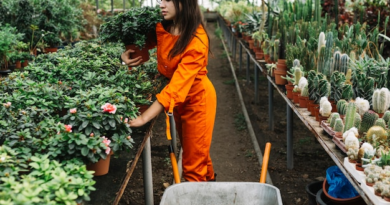Solar Pump Technician(6 month course)
Solar Pump Technician

Solar Pump Specialist connects PV solar module with battery and pump to supply water to plants in areas where electricity is inaccessible or impractical. Short Job Description: The job of the Solar Pump Technician is to install a solar PV module on the mount / pole, connect it to the battery / inverter and pump and connect the pump to the water source and destination. Your Qualities: An employee needs the ability to work as a team, the ability to ask appropriate and appropriate questions, and to test answers and the ability to work to find a product that fits the requirements. Work also requires a person to work under the sun for long hours so they should have an internal motivation to work in rural and agricultural areas Solar Pump Technician.

Assessment of site and raw material procurement Solar Pump Technician:
In order to be effective, each user / individual must be able to: PC1. understand the need for each task and PC2 operating environments. contact the administrator to understand the installation terms of the day and / or PC3 week. understand the installation location and expand the PC4 system. schedule daily tasks and a complete work plan for each PC5 installation. liaising with various departments and individuals involved in installation operations such as design, asset management, asset management and PC6 stores. to cut off absenteeism and to report to work on time. To assess site conditions In order to be effective, a user / individual must be able to: PC7. conduct a site survey and soil type to understand the type of growing structure and design PC8. Understand whether the ride will have an automatic or hand-made trend for the season. PC9. decide on the type of installation to be done depending on the air, open spaces and colors of PC10. make sure the world is rated for PC11. determine the type of connecting accessories required for installation in the PC12 site environment. make sure the sunlight time is captured in the PC13 area. ensure that the construction has the ability to hold the solar panel for 20-25 years, in particular, on PC14 top roof. ensure that the installation is close to the water source PC15. make sure the field / destination dam is within the PC16 vehicle limits. ensure that the site is suitable for PC17 battery area. inform the customer of any public construction that will be done to install the panels Solar Pump Technician

In order to be effective, each user / individual must be able to: PC18. understand location and customer preferences PC19. interact with customers and understand the purpose of installing and proposing alternative PC20 methods. compare the power of the electric power of a solar-powered solar system with the loss of pump power requirement according to customers choosing PC21. notify customers of the time required for installation and any requirements during PC22 installation. get approval from the customer in the packaging to be purchased for installation based on the agreed design Collection of materials To be effective, each user / individual must be able to: PC23. configure and assemble solar panels, pump controller, pump and battery according to PC24 customer requirements. ensure that the number of modules / panels corresponds to the power / PC25 power requirement. plan to mount tables / poles according to each PC26 design. arrange the tools and equipment needed to build poles / install solar panels, digging PC27 battery. decide on the required staff and organize a PC28 team. ensure that only the company’s high quality products are used except as defined by the customer Ensuring the quality of the goods and handling In order to be competent, the user / individual must be able to: PC29. ensure that all purchased items are QC approved PC30. make sure the module is not damaged and the outer glass does not break PC31. understand the asset management policy and follow the standard operating procedure while moving them to PC32. close the glass module with opaque material to ensure that there is no power supply before the installation of PC33. ensure the normal module management process as two people should raise the module, the module should not be carried on the head, etc. PC34. ensure that the modules are stored in such a way that they do not damage the fall or any PC35 of external interference. make sure the battery is handled in such a way that it is not tilted from side to side to avoid leakage of PC36 acid. ensure that the vehicle is kept above water level in the event of immersion pumps

Organizational Context (Knowledge of the company / organization and its processes) Solar Pump Technician:
The person at work needs to understand: KA1. Company policies in: benefits, personnel management KA2. company code of conduct KA3. the importance of the role of the individual in the flow of work KA4. organizational culture KA5. KA6 company reporting structure. KA7 record company policy. a separate company department and KA8 related authority. KA9 company inclusion policy. The company’s customer support policy Solar Pump Technician
Technical Knowledge:
The person at work needs to know and understand: KB1. foundations in solar energy systems and electricity generation capacity KB2. process for the use and management of solar panels KB3. power storage, control and conversion KB4. the basic electrical and performance system of KB5. basics of battery performance and service KB6. plumbing and drainage foundations KB7. mechanical operation equipment and its performance of KB8. equipment maintenance process KB9. location testing, design and testing of various parameters KB10. tools involved in the installation of the KB11 system. quality standards and procedures KB12. occupational health and safety standards KB13. Waste management and disposal procedures and standards KB14. The importance of wearing protective clothing and other safety gear while performing KB15 installation. steps to be taken while handling Different electrical and mechanical products
Core Skills/ Generic Skills:
The person at work needs to know and understand how to do this: SA1. complete the application form after the submission work has been completed Learning Skills The employee needs to know and understand: read product and resource manuals, application manuals, etc. SA3. read the warnings, instructions and other labels on product labels, components, etc. Oral communication (listening and speaking skills) The user / person at work needs to know and understand how to do this: SA4. discuss job lists, schedules, and workloads with farmers and colleagues SA5. ask farmers to understand the nature of the problem and make a SA6 diagnosis. give clear instructions to farmers SA7. keep customers informed of SA8 progress. Avoid using jargon, slang or acronyms when communicating with the farmer, unless necessary. make decisions about the affected workplace SB2. use or use of different tools such as screw drivers, test structures Solar Pump Technician,

telephone cutter, pliers, tester, panel, voltmeter, ammeter, water meter, compass, etc. Plan and Edit The user / person at work needs to know and understand: how to make SB3. edit and edit SB4 response files / documents. how to manage tools and equipment and keep them in good condition Customer level The user / person at work needs to know and understand: SB5. build relationships and use the human centric SB6 method. manage relationships with workers and other farmers in partnership with SB7. attend and use exposure visits Problem Solving The user / person at work needs to know and understand how to do it: SB8. identify problems immediately and take SB9 delayed resolution solutions. think about the problem, explore possible solutions and use the biggest / best solution for analytical thinking The user / employee needs to know and understand: SB10. view and store the equipment and equipment needed for a variety of farm operations Critical Thinking The user / person at work needs to know and understand: SB11. do his own work and study

Solar Panel and Battery Installation Solar Pump Technician:
In order to be effective, each user / individual must be able to: PC 1. understand customer needs in PC installation 2. ensure that all components are available during PC installation 3. ensure that all tools are available during PC installation 4. to ensure disconnection PV module for any electrical sources such as batteries, inverters, etc. before working on the PC module 5. check that the module is flawless before installing the PC 6. make sure to take certain measures such as fire resistance, resistance to corrosion module during installation Test installation To be able to work properly, each user / individual must be able to: PC 7. understand type for installation and other necessary equipment PC 8. to check the degree of inclination and angle of inclination of the PV module of a particular area, area or region to enable the system to capture the maximum amount of sunlight for PC 9. to ensure that sunlight falls consistently on the PV module absorb maximum power of PC 10. ensure that the panels are placed in an area where There is no shade at any time of the year from buildings or trees PC 11. ensure that the mounting / pole is strong against wind, rain, etc. PC 12. ensure that any special construction requirement is performed in accordance with the accepted quality standards, in particular, in the installation of the PC field 13. use authorized PC installation tools 14. set the mounting display in the desired location Installing panel and battery For efficient operation, user / person should be able to: PC 15.remove the installation of solar panel PC 16. manage panels without damaging the visible PC 17. cover the module with material when installing to avoid any current Solar Pump Technician

ensure that the connecting box is covered with PC 19. do not disturb or disassemble any part of the section during PC installation 20. take the necessary precautionary measures for fire resistance of PC modules 21. use recommended solar cable and electrical plugs i -PC 22 install a backup fuse to avoid any short circuits as per the company’s PC 23. install the module on the line and sails using bolts and nuts PC 24. make sure the panels are installed on PC 25. Place the battery inside the battery compartment without tilting System battery and performance testing In order to be effective, each user / individual must be able to: PC 26. use cables to connect multiple PV modules together to produce the desired voltage with the current PC 27. select the type of connection, i.e., series or similar, according to each design for PC 28. seen bring the recommended cable to generate the maximum voltage of PC 29. check the maximum power supply by installing and following the steps to match the output i need PC 30. make sure the modules are supported as the installed PC 31. connect the system to the battery and check PC charging 32. increase any problems you experience during application operation Completion and quality assurance To be competent, the user / individual must be able to: PC 33. clean the work environment after completing the PC installation 34. Remove all tools, utensils used in PC 35 installation site. complete the completion form and receive the PC 36 customer signature. inform customers of solar panel maintenance and solar panel cleaning process 37 37 of electrical power as desired its, charging the battery is normal and the discharge of the battery remains the same Solar Pump Technician
Organizational Context (Knowledge of the company / organization and its processes) Solar Pump Technician:
The person at work needs to understand: KA1. Company policies in: benefits, personnel management KA2. company code of conduct KA3. the importance of the role of the individual in the flow of work KA4. organizational culture KA5. KA6 company reporting structure. KA7 record company policy. a separate company department and KA8 related authority. KA9 company inclusion policy. The company’s customer support policy


Technical Knowledge:
The person at work needs to know and understand: KB1. foundations in solar energy systems and KB2 energy generation. components of a solar power system such as panels, batteries, charging controls, Inverters (in the case of AC Pumps) KB3. differences between AC and DC technology and KB4 products. value of volts, amps and watts: series and the same connection KB5. solar panel management system KB6. battery power storage function, control and modification KB7. the basic electrical and operational system of KB8. mechanical operation equipment and its performance of KB9. equipment maintenance process KB10. voltage voltage of various machines KB11. panel installation and inclination and angle of inclination of KB12. placement of solar panel installation KB13. sunlight and direction direction KB14. site testing methods and testing parameters KB15. tools involved in the installation of the KB16 system. basic electrical engineering and rotation of KB17. quality standards and process KB18. occupational health and safety standards and waste management practices KB19. the importance of wearing protective clothing and other safety equipment while performing KB20 installation tasks. steps to be taken while handling Different electrical and mechanical products
Core Skills/ Generic Skills:
The person at work needs to know and understand how to do this: SA1. complete the application form after the submission work has been completed Learning Skills The employee needs to know and understand: read product and resource manuals, application manuals, etc. SA3. read the warnings, instructions and other labels on product labels, components, etc. Oral communication (listening and speaking skills) The user / person at work needs to know and understand how to do this: SA4. discuss job lists, schedules, and workloads with farmers and colleagues SA5. ask farmers to understand the nature of the problem and make a SA6 diagnosis. give clear instructions to farmers SA7. keep customers informed of SA8 progress. avoid using jargon, slang or acronyms when communicating with the farmer, unless necessary Solar Pump Technician
The user / person at work needs to know and understand how to do it: SB1. make decisions for the affected area of the SB2 function. where you will use / use various tools such as screw driver, test kits, phone cutter, pliers, tester, panel, voltmeter, ammeter, water meter, compass etc. when to report to manager depending on the type of concern Plan and edit User / person at work needs to know and understand: how to SB4. edit and edit SB5 response files / documents. how to manage and maintain equipment and equipment Customer times A user / employee needs to know and understand: SB6. to attend and use the SB7 portrayed tourism. manage relationships with workers and other farmers in partnership with SB8. building relationships and using human problem-solving approach The user / person at work needs to know and understand that: SB9. identify potential problems and take the necessary steps. Analytical Thinking The user / person on the job needs to know and understand: SB10. reduce repetitive errors and improve SB11 planting process and conditions. plan and watch a successful marrow transplant for healthy eating Key Thinking The user / person at work needs to know and understand: SB12. to apply, analyze and evaluate information collected from observations and experiences Solar Pump Technician
Plumbing System and Pump Installation Solar Pump Technician:

In order to be competent, the user / person at work must be able to: PC1. assemble pipe sections, tubing and PC2 installation. cut, thread and join PC3 pipes. to open the openings with structures Installation of the pump In order to operate properly, the user / person at work must be able to: PC4. Connect the pump to the battery in the event of a DC pump or inverter in the event of an AC pump. PC5. Connect the pipes to the pump from the source and areas where PC6 is located. Adjust the water supply according to each PC7 requirement. Understand different types of pumps such as underwater, immersive pumps
Organizational Context (Knowledge of the company / organization and its processes):
The user / person at work needs to know and understand: KA1. Company policies regarding: quality and delivery standards, safety and risk, integrity, dress code, etc. KA2. the risks and consequences of non-compliance with the prescribed procedures / operating instructions KA3. how you can assist in the supply / replacement of equipment / workspace in accordance with the Instructions Solar Pump Technician
Guidelines for Assessment:
- Criteria for assessment for each Qualification Pack will be created by the Sector Skill Council. Each Performance Criteria
(PC) will be assigned marks proportional to its importance in NOS. SSC will also lay down proportion of marks for Theory
and Skills Practical for each PC. - The assessment for the theory part will be based on knowledge bank of questions created by the SSC.
- Assessment will be conducted for all compulsory NOS, and where applicable, on the selected elective/option NOS/set of Solar Pump Technician.
NOS. - Individual assessment agencies will create unique question papers for theory part for each candidate at each
examination/training center (as per assessment criteria below). - Individual assessment agencies will create unique evaluations for skill practical for every student at each
examination/training center based on this criterion. - To pass the Qualification Pack , every trainee should score a minimum of 70% of aggregate marks to successfully clear
the assessment. - In case of unsuccessful completion, the trainee may seek reassessment on the Qualification Pack.








